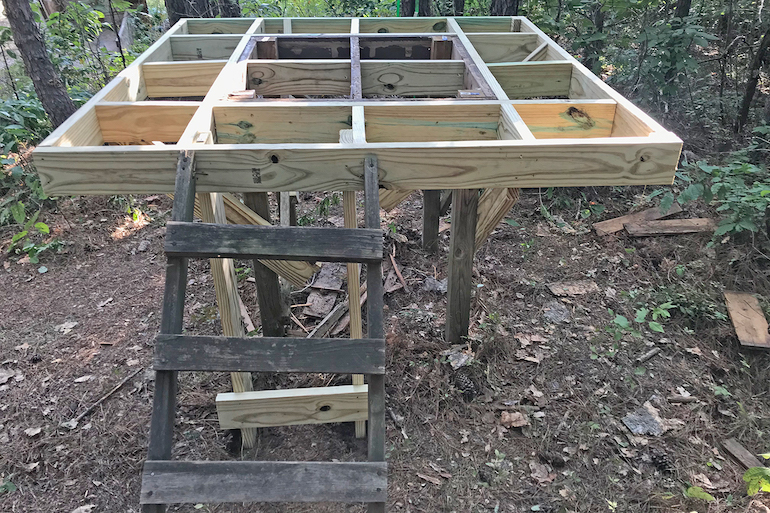JavaScript is disabled. For a better experience, please enable JavaScript in your browser before proceeding.
1 - 20 of 46 Posts
1 - 20 of 46 Posts
Top
CROOKSTON -- If Norman Landby doesn't have the coolest deer stand in the woods this hunting season, he's got to be right up there.
Or down there.
Or somewhere in-between.
A retired electrician and farmer, Landby, 72, put his savvy for building a better mousetrap to work a couple of years back by developing a mobile deer stand that mounts on a trailer and raises and lowers with a hydraulic lift.
The 5x5 stand is fully insulated, carpeted and has windows on all four sides. Once he's inside, Landby can raise or lower the stand by pushing a button on an electrical hydraulic pump that's mounted in a corner. The pump, which is powered by a deep-cycle 12-volt battery, raises the bottom of the stand from a height that's about 7 feet above ground level to 11 feet when fully elevated.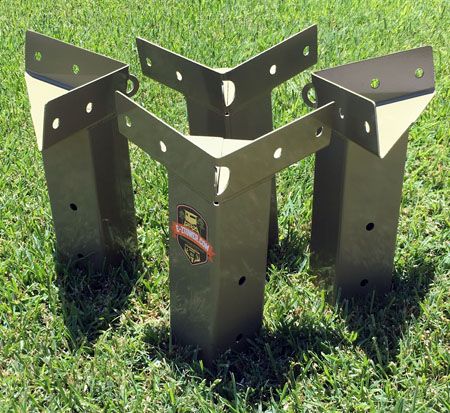
ADVERTISEMENT
At eye level, that's about 16 feet, giving Landby a clear vantage point of the surrounding countryside.
It's truly a marvel of engineering and ingenuity.
"Everything is thought out," Landby said earlier this week, demonstrating the stand a few days before deer season in the backyard of his Crookston home. "It's got a lot of thought in it, and a lot of personal innovation."
He presses a button: The stand rises slowly.
He presses another button: The stand lowers to its original position in seconds.
"Up and down like a yo-yo," he said. "I like the quick descent. It's a little noisy, but it doesn't seem to matter."
Deluxe with a twist
Deluxe deer stands are nothing new -- they're fixtures across northeastern North Dakota and northwestern Minnesota these days -- but most of them limit hunters to a particular location.
ADVERTISEMENT
Not so with Landby's stand.
The Crookston handyman designed his stand so the metal framing that supports it bolts to a heavy-duty 5- by 10-foot trailer, and there's still plenty of room for him to haul his ATV.
It's quite a sight, Landby says, when he heads down the highway the day before deer season, towing the stand and trailer behind the deluxe camper that serves as his hunting home away from home.
"It's a train, a real menagerie," he said. "But it handles well on the highway. You don't even notice it. We get a lot of looks."
The beauty of Landby's stand becomes most apparent when he gets to his hunting spot near Warroad, Minn.: He unloads the ATV, hooks it to the trailer and heads for the woods.
"I've pulled it in really rough country," Landby said. "You look at it and say, 'you can't go through that.' But it goes right along."
Landby uses jacks mounted on the trailer, along with blocks of wood to level and secure the setup. Having the stand level is essential for it to raise and lower properly, he says.
He then covers the trailer with camouflage burlap, inserting branches and other natural cover into hooks screwed into the outside walls to conceal the stand.
ADVERTISEMENT
From that point, he's only a button's-push away from deer hunting comfort.
"I've been up in it in 35 mph winds, and it's solid," Landby said. "The longer you sit up here, the more trusting you get. It's easier to trust the strength and stability of it."
Landby also can heat the stand. A 20-pound tank mounted outside runs a small propane heater that Landby keeps inside the house for cold days.
"You can be out there in a steady downpour and stay dry and comfortable even with the windows open," he said. "It's nice; it's just plain nice. When you get a little older, you need a little incentive to keep hunting.
"I get more excited every year to use it."
The deer don't seem to pay it much heed, either.
"I like to camo it as best I can," Landby said. "I've had deer walk by and not even look."
Gradual process
According to Landby, there wasn't one particular hunting trip or encounter that led him to embark on his quest for comfort.
Instead, it was more of a gradual process.
"The plan formed in my mind for two or three years," he said. "I thought it wouldn't hurt to find suitable material."
And so he started collecting; and scrounging.
The hydraulic pump came from a piece of gravel-handling equipment, and Landby got that from a nephew for free. He bought the hydraulic ram -- the shiny plunger-like device the pump powers to raise and lower the stand -- for $10 from a farmer/junk dealer near Karlstad, Minn.
The trim lumber is treated cedar sawn from recycled power-line poles, and most of the support braces are old bed rails.
He got the windows from the neighborhood mail carrier who was doing a home remodeling project.
Much of the expense, Landby says, came from the ¼-inch plywood and studs for constructing the stand, and the square steel tubing that forms the base of the stand.
The base also shows Landby's ingenuity, with 1½-inch steel tubing that fits into 2-inch steel tubing so the frame can raise and lower. Landby says the hydraulic ram, which is 4 feet long, was the determining factor in how much the stand could raise.
Landby says the hydraulic ram, which is 4 feet long, was the determining factor in how much the stand could raise.
He had to have the ram in place before he could start building the stand.
"I didn't draw anything," Landby said. "I built it all out of my head. I started like a house from the bottom up. I built the base, the legs and mounts and built the house on top of it."
Landby started building the stand in August 2005, and he finished it just in time for deer season.
There've been a few revisions since then, but Landby now has the stand pretty much the way he wants it.
Ask him what the stand cost, and Landby only smiles and says he shudders to think about it. But for this admitted tinkerer, the stand obviously is his crowning glory.
"I think I've got quite an invention here," he said. "I had this notion a few years back, and it finally became a reality."
Dokken reports on outdoors. Reach him at (701) 780-1148; (800) 477-6572, ext.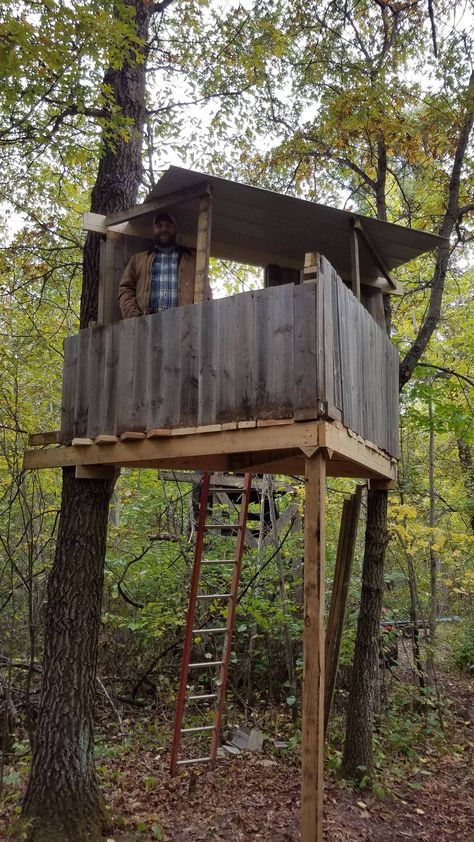 148; or send e-mail to [email protected] .
148; or send e-mail to [email protected] .
Norman Landby of Crookston stands by the mobile, hydraulic-lift deer stand he invented and built. (Photo by Brad Dokken)
A quad bike, unlike a snowmobile, is an all-season use technique. But in order for the all-terrain vehicle to faithfully plow the virgin snow all winter, it must be prepared for operation in the cold season. Otherwise, by the end of winter, or even earlier, the quadric can easily “die”. The AvtoVzglyad portal tells about the nuances of the winter use of "quadrics".
Maxim Stroker
Most often, ATV owners face the problem of difficult starting in cold weather. Perhaps the problem may be in poor contact between the power wires and the battery terminals. If there is oxidation in the connection, then the battery itself does not charge well and at the time of starting in the cold it simply does not have enough voltage to confidently turn the crankshaft with the starter.
The problem is solved simply: disconnect the wires from the battery, remove oxides with sandpaper, and so that they do not form in the future, we process the battery terminals with a special Liqui Moly Kontaktreinig contact cleaner. This combined action aerosol formulation removes metal oxides and grease in a single process. The special chemical formula almost instantly loosens and eliminates oxide salts, restores electrical conductivity, and also blocks leakage currents.
But much more often, motor oil becomes the cause of difficult start-up in cold weather. Most ATVs run on 10W-40 or 10W-50 lube during the summer. In general, such oil is considered to be quite all-weather, but if your “quad” is not in a heated garage, but on the street, then in severe frosts, difficulties arise with starting the engine, since the thickened oil provides excessive resistance.
But even if the engine starts, the first seconds after starting it can work, which is called dry, since it will be very difficult for the oil pump to create the necessary pressure due to the thickened lubricant and supply it to the rubbing surfaces. This is especially dangerous for motors assembled on so-called plain bearings, because due to oil starvation, main or connecting rod bearings can turn.
This is especially dangerous for motors assembled on so-called plain bearings, because due to oil starvation, main or connecting rod bearings can turn.
In order not to encounter such a problem, before the onset of severe cold, you should fill the ATV engine with oil with a viscosity of 5W-50. The Liqui Moly product line has a quality lubricant with the right characteristics, one hundred percent suitable for ATV operation in winter. Liqui Moly ATV 4T Motoroil 5W-50 HC-synthetic motor oil provides maximum performance and engine protection under all operating conditions.
Anti-wear additive package and base stock provide maximum ATV engine protection and trouble-free operation over a wide range of temperatures and loads. The oil guarantees easy start-up at low temperatures and high viscosity-temperature stability.
It is by no means a superfluous procedure before winter to change the oil in the all-terrain vehicle gearboxes.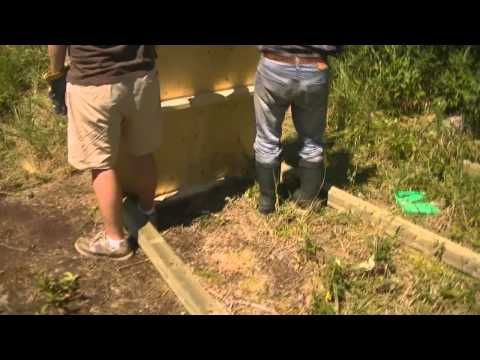 Despite the fact that there is no winter transmission for ATVs as such, it is still necessary to change the oil before frosts, because water from autumn puddles could well get into these nodes, through a breather or seals, which, mixed with oil, turns into an emulsion . And if you take into account that the gearboxes of modern ATVs have an electrician (someone has an electromagnetic clutch, someone has a servo drive), then there will be continuous problems from such a “slurry” in winter.
Despite the fact that there is no winter transmission for ATVs as such, it is still necessary to change the oil before frosts, because water from autumn puddles could well get into these nodes, through a breather or seals, which, mixed with oil, turns into an emulsion . And if you take into account that the gearboxes of modern ATVs have an electrician (someone has an electromagnetic clutch, someone has a servo drive), then there will be continuous problems from such a “slurry” in winter.
If there is any chance that the gearboxes of your "rogue" have taken a sip of water, then in addition to filling in new oil, they also need to be washed. Drain the waste from the gearboxes, tighten the bottom plug, and pour the quick cleaner Liqui Moly Schnell-Reiniger through the filler.
This agent is absolutely safe for electrics and rubber seals of the gearbox, but at the same time it will effectively clean the inside of the assembly from the remnants of the emulsion. For best results, jack up the quad axle you are flushing and turn the wheels forward/back by hand to flush the remaining emulsion from the sidewalls as well.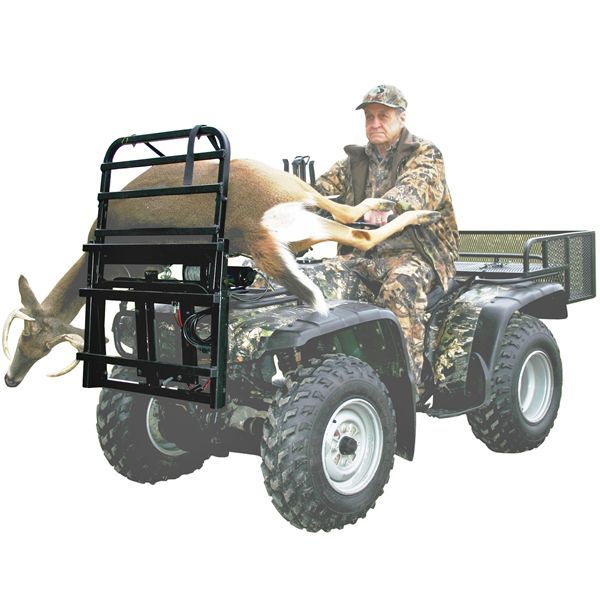 After that, unscrew the drain plug, get rid of the dirty contents and, screwing the plug back, pour in fresh gear oil.
After that, unscrew the drain plug, get rid of the dirty contents and, screwing the plug back, pour in fresh gear oil.
ATVs most often use a transmission with a viscosity of 75W90. It is suitable for most ATVs and is poured into both front and rear gearboxes. The German brand Liqui Moly has in its assortment a synthetic gear oil for motorbike Gear Oil 75W-90. It is in a sense universal, all-weather, and equally suitable for transmissions and motorcycles, and scooters, and ATVs, and snowmobiles.
This oil contains polyalphaolefins and special additives, due to which the lubricant does not change its properties either at sub-zero or positive temperatures. Its thermo-oxidative stability and resistance to aging allow for extended drain intervals that are significantly higher than other similar oils of similar viscosity.
In any case, check the manufacturer's recommendations before filling gears with oil, as some ATV models require gear oil for clutch operation. By the way, Liqui Moly also has such oils in its product line.
For the running gear to work well, it also needs to be prepared for the winter. Namely, lubricate the bushings of the fists and suspension arms with grease with a low freezing point, which at the same time is capable of operating in combined metal-plastic pairs. Perfectly fits this description of Liqui Moly Thermoflex Spezialfett.
This light beige grease has a long service life and is resistant to water and low temperatures (down to -50C).
… As we can see, in order to meet the Russian winter fully armed, an ATV does not need so much: the desire of the owner, skillful hands and high-quality technical fluids, such as German Liqui Moly fluids.
We solve "unsolvable" problems with the repair of equipment in one "puff"
21772
We solve “Unresolved” problems of repairing equipment in one “Pshik”
21772
Subscribe to the Autovzglygs channel:
 Zen
Zen , quadrocycles , car service, repair, maintenance, mototechnics, auto chemical goods, life hack
From time to time the quad is acting up and not behaving as you would like. Nothing beautiful lasts forever, right?
One of the most common problems you may encounter is the ATV suddenly pulling to the left or right.
If you're lucky, your problem may have a simple solution)
Let's take a look at some of the most common causes of ATV pulling to the side, and of course, here we'll talk about how to get rid of these problems.
The most common problem that causes the ATV to pull to one side is the difference in rolling resistance due to different tire pressures. Also, the problem may be associated with natural wear or damage to various components of the chassis of the ATV and, as a result, a violation of the angle of the wheels.
So how do you determine what is causing problems when riding an ATV?
As you probably already understood, there can be several reasons.
To understand why an ATV wants to pull off the road and dive into a ditch when you really don't want to, you need to do a number of checks.
Although I don't have exact statistics to tell you which malfunction occurs most often, I still recommend that you start with what is easiest to check and fix before spending time and money on more unusual and potentially more complex searches.
In my experience, the most common cause, and by far the easiest problem to check and fix, is uneven ATV tire pressures.
Let's look at what happens when ATV tires have different pressures.
A flat tire has a larger area of contact with the road surface than a normally inflated wheel, as a result of which the friction force, and hence the rolling resistance force, applied to such a wheel will be higher. The wheel will roll more slowly. The opposite wheel will run ahead and try to turn the ATV around the slow wheel. That is, if the ATV pulls, for example, to the left side, most likely, the fact is that the left wheel is lowered.
The wheel will roll more slowly. The opposite wheel will run ahead and try to turn the ATV around the slow wheel. That is, if the ATV pulls, for example, to the left side, most likely, the fact is that the left wheel is lowered.
To solve this problem, you need to equalize the air pressure in the ATV tires. It is best to refer to the operating instructions, which must indicate the required air pressure in the wheels recommended by the manufacturer. The pressure in the wheels installed on the same axle of the ATV must be the same.
At the same time, you should be aware that due to the design features and weight distribution of the ATV, the tire pressure on the front and rear axles may differ. MOTAX and YACOTA have such sensors in the standard tool kit. If there is no such device in your kit, I recommend that you definitely purchase it. A very slight difference in air pressure in the tires may well be the reason that the ATV pulls to the side when driving in a straight line.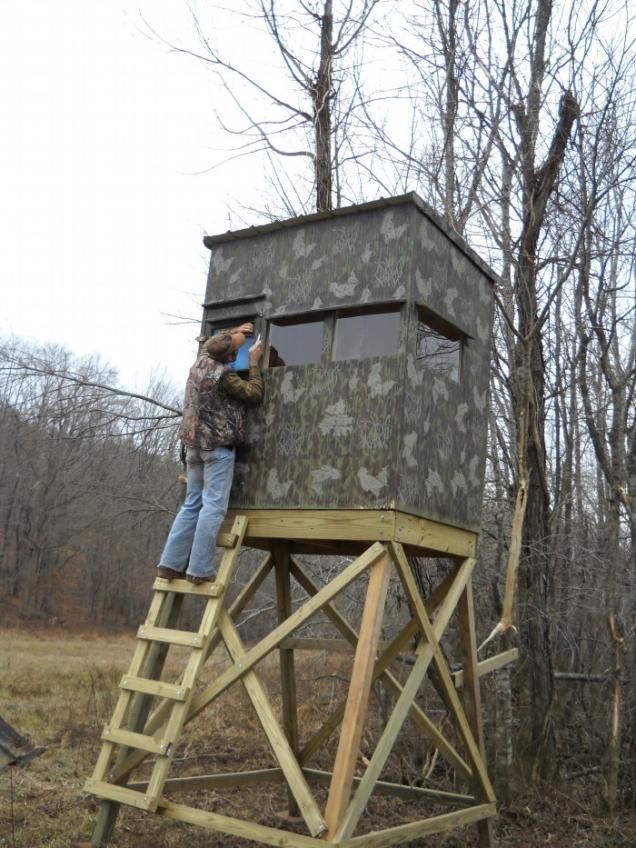
The air pressure should be checked in both front and rear tires. True, uneven pressure in the rear tires, most likely, will not be the reason for the withdrawal of the ATV from a straight path. Different pressure in the rear tires can provoke another malfunction - premature wear of the rear differential, due to the increased load on it. But this is a story for a separate review.
I always keep this inexpensive instrument in my tool kit, its accuracy is good enough to use.
Also make sure that the maximum tire pressure is not exceeded.
Over time, ATV wheels can wear differently, resulting in the diameter of one wheel being different from the diameter of another wheel. This can also cause the ATV to pull to the side.
To check if the front wheel diameters are the same, you can do a simple check: place the ATV on a flat surface and use chalk to make a mark on the sidewall of each front tire at the lowest point.
Wheels must be pointing straight ahead, gear lever in neutral position.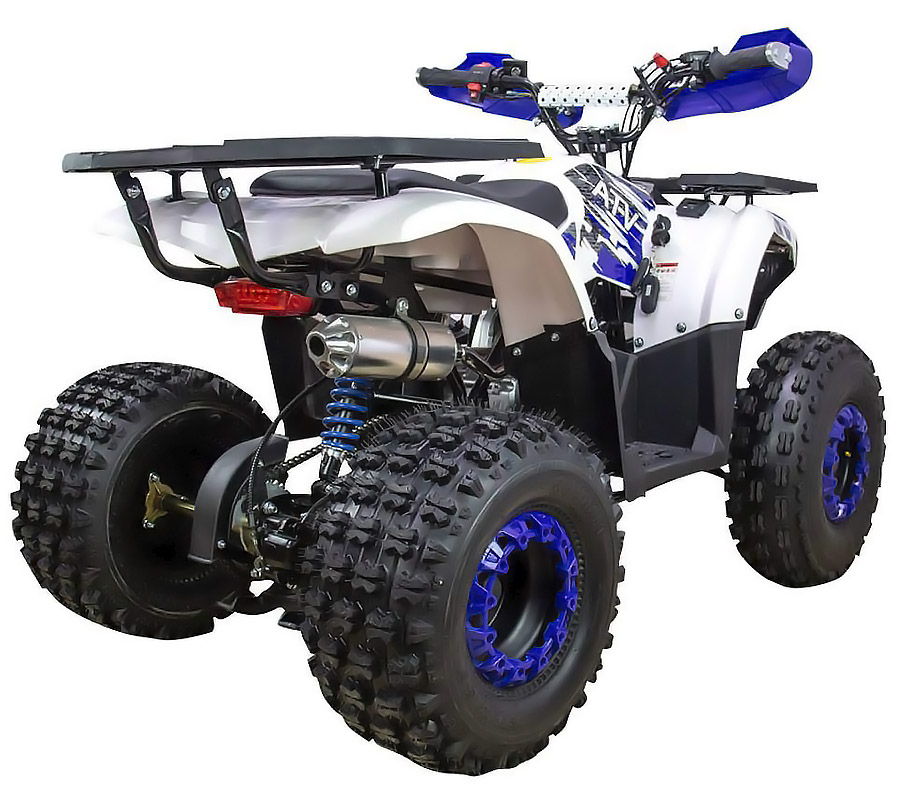 Roll the ATV forward until one of the wheels has made two or three revolutions and the mark you just made is back to the very bottom, to its original position. Look at the mark on the opposite tire. Ideally, it should also be at the very bottom. If this is not the case, the wheel circumferences do not match.
Roll the ATV forward until one of the wheels has made two or three revolutions and the mark you just made is back to the very bottom, to its original position. Look at the mark on the opposite tire. Ideally, it should also be at the very bottom. If this is not the case, the wheel circumferences do not match.
If the reason for the ATV pulling to the side lies in the difference in wheel circumference, then when driving to the right, the right tire should have a smaller circumference, and when driving to the left, the left one.
The circumference of the wheels can differ not only due to uneven wear, but also due to the difference in air pressure in the tires.
The wheel is like a balloon, the higher the pressure, the larger its diameter and vice versa.
For this operation, you need to lift the ATV, put it steadily on the supports so that all the wheels are in a suspended state.
It is very convenient to use motorcycle stands to lift the ATV. If you don’t have them yet, and you plan to service the ATV yourself, I recommend purchasing them. They are relatively inexpensive. Tackles will greatly simplify the ATV maintenance process.
Check that there is no excessive play in the ATV's suspension and steering joints. Start with the tie rods and steering rack. This operation is more convenient to carry out with an assistant. Have an assistant move the ATV handlebars to the right and left, often and with a small range of motion. And you, in turn, keep your hand on the swivel, which are subject to verification. Check the steering tips and tie rods one by one. You will feel the excess play in the hinge with your hand. If the ATV steering wheel has excessive play, but the tie rod and steering tip are in order, then the steering rack itself or the steering shaft bushing may have play, which can also be checked by hand. The steering column bushing usually wears out over time. The same goes for the ball joints on the tie rods.
The same goes for the ball joints on the tie rods.
Tighten any loose bolts and replace worn parts. Worn parts can break soon, so replacing them won't be a waste of money, even if their wear isn't the reason your ATV pulls to the side.
In addition, the wheel bearings must be checked for excessive play.
To do this, ask an assistant to take the wheel by the hands of the upper and lower parts and shake it, while you check the play in the ball joints and wheel bearings.
Check how easy the wheels turn. The wheels should rotate freely, without noise and crackling. The presence of noise indicates wear on the hub bearing. And the tight running of the wheel is about bearing wear or souring of the brake pads. As we said, if one of the ATV's wheels is spinning at a slower speed than the other wheel, the ATV will pull towards the slow wheel.
If necessary, replace the bearings and service the front brake calipers. Sometimes the caliper is easy enough to clean, and sometimes you can’t do without replacing the brake cylinders or the caliper bracket itself.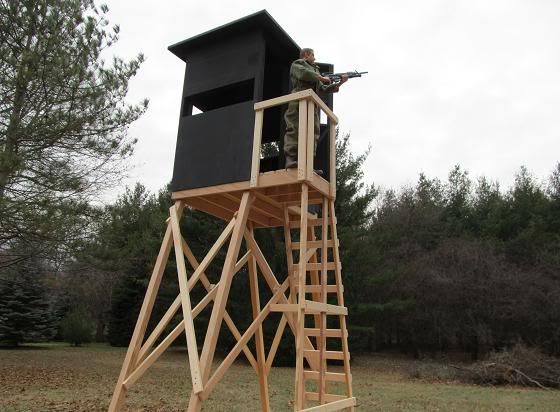
Finish with suspension lubrication. The chassis of ATVs of the brands YACOTA , MOTAX , AVANTIS is equipped with special grease fittings through which you can easily lubricate the desired suspension unit. We have already told, in one of the reviews, using the example of a gasoline 125 cc ATV MOTAX T-REX , about the features of maintenance of the ATV suspension. Regular maintenance of your ATV will definitely prolong its life.
Control check three: check the running gear for geometry violations.
If you use the ATV for active riding or sports, then it is possible that you have bent some part of the suspension on the next jump. ATV front suspension A-arms are especially prone to damage if you hit a stump or rock while riding. "Fast-growing" trees suddenly appearing in front of the ATV as you drive, a common story!)
A-arms are designed to absorb heavy suspension shock and, through their integrity, retain more expensive and hard-to-find ATV parts that are more difficult, more expensive or even impossible to repair, for example, an ATV frame.